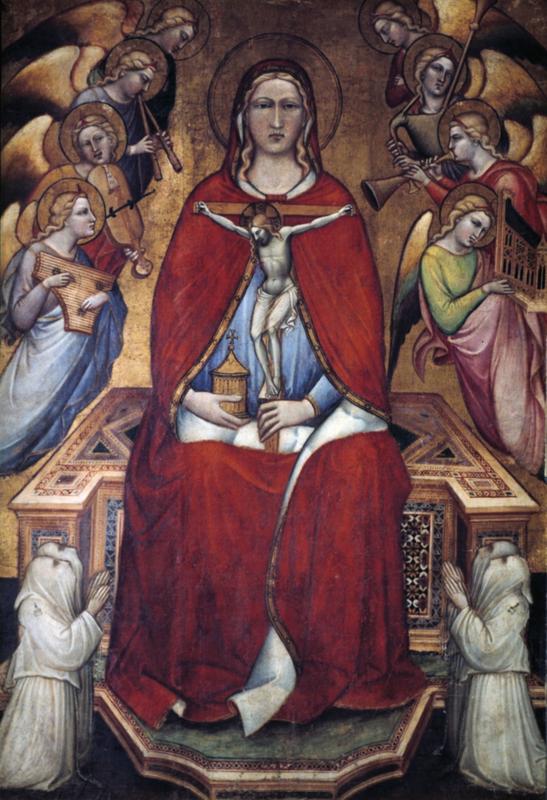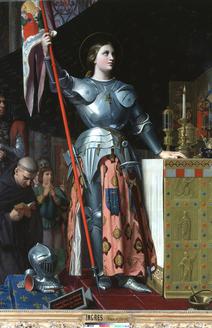Women's Travel Abroad
For Women About Women By Women
Medieval
You Are Welcome to Contact Me Personally With Comments or Questions
Copyright 2017 Creative Travel Publications, LLC
Illuminations
A Novel of Hildegard von Bingen
Mary Sharratt
Houghton Mifflin Harcourt, New York, 2012. ISBN: 9780547567846
Illuminations is a well researched novel about the trials and tribulations of Hildegard von Bingen, a 12th century German Benedictine nun. Over time she has become one of the most respected and revered spiritual women of her time. Her visionary texts and religious songs are still read and sung today.
As a young girl Hildegard lived with her mother, brothers and sisters in the small town of Bermersheim, Germany. Her father and older brothers were in the Holy Land fighting in the Crusades. From an early age she experienced prophetic visions inside of beautiful floating orbs.
The visions fascinated and frightened Hildegard. She was well aware of many other women whose visions were considered heresy by the church and who had been punished severely. Hildegard waited until her later years to write them down.
Hildegard's first religious experience was a somber one. Her mother gave Hildergard to the daughter of their leige lord in return for dowries for Hildegard's sisters. Sadly for Hildegard this meant living the rest of her life as the oblate of Jutta von Stade in the anchorite cell at the monastery of Disibodenberg.
Being shut in was torture for the nature loving Hildegard. Fortunately the anchorite had a small walled garden where she could grow flowers and herbs given to her by the kind priest Volmar. Most of Jutta's and Hildergard's time was spent praying masses and sewing altar cloths and vestments.
Jutta taught Hildegard to read and write rudimentary Latin. Both anchorites were allowed books from the monastery library. Hildegard mastered Latin texts on religion, philosophy, science, and medicine.
Pilgrims flocked to the anchorage to consult with the magistra Jutta. However, much of the time Jutta was too absorbed in self punishment to talk with the pilgrims so Hildegard had to speak for her instead.
The reputation of Disibodenberg's anchoress attracted wealthy patrons who gave generous gifts to the monastery. Among the gifts were two new oblates, Adelheid and Guida, for Jutta. They were later joined by Richardis, the mute daughter of the Margravine von Stade. Space in the anchorage was tight and Jutta simply could not tolerate the noise of these lively new young girls. Abandoning them, the girls turned to Hildegard for mothering.
When Jutta died Hildegard insisted the anchorage be turned into a nunnery. Other young women heard of it and wanted to join. They donated their dowries to the monastery, took their vows, and lived in the nunnery. Eventually the anchorage became too crowded and cramped.
While Hildegard was in Mainz defending her writing of the Scivias she received the hermitage of Rupertsburg from the archbishop Heinrich of Mainz as a gift. Richardis' mother also helped by donating money which paid for laborers who built the dormitory and chapel.
Taking her priest and scribe Volmar with her Hildergard continued writing at the new nunnery. Richardis (who the author portrays as the illuminator of Hildergard's writings) also went along with the other nuns but was eventually sent to the monastery at Bassum. She died there only three years later.
At Rupertsburg Hildegard composed her most beautiful hymns to be sung by the Hermitage's nuns. Here too she suffered the defection of several of the nuns to another nunnery and the death of her beloved friend Abbess Richardis. She and her nuns also endured two years of an interdict for refusing to allow church officials to desecrate the grave of an abused, young, male apostate to whom the nuns had provided sanctuary.
The author's character development is plausible and their relationships are emotionally engaging. A sense of place is well established and sites seem very real especially the claustrophobic anchorite cell. Equally interesting is the Afterword where you will find a compilation of many of Hildegard's works.
Readers Adults
Genre Fiction/History
Religion
Period Middle Ages
Extras Hours of Divine Office
Afterword
The Maid
A Novel of Joan of Arc
Kimberly Cutter
Center Point Publishing, Thorndike, Maine, 2011. ISBN: 9781611733112
Cutter portrays Joan of Arc, patron saint of France, in all her military glory. The author realistically uses dialog so the reader is privy to all of Joan's revelations and dreams. Joan's interaction with her saintly advisers is interwoven with those of her earthly companions. This juxtaposition between heavenly intervention of saints and earthly meddling of humans creates a strong sense of conflict and tension.
Over the last six hundred years Joan of Arc, as with many other martyrs, has become a legend in her own right. She is one of our most treasured models of fearless woman warriors. The French populace declared her their saint in the 1400's. The fact that in 1920 she was officially recognized as the patron saint of France by the Catholic Church has imbued her image with even more power.
The author gives us a genuine picture of Joan of Arc as a freedom fighter and military leader. Battles are told in all their gory details. We get to see Joan deal with her emotions about victory and defeat, loss of life in war time, and her own close encounter with death on the battle field.
Cutter spends very little time telling the story of her heresy trial and execution. She allows us to see Joan dealing with her own spiritual struggles, disbelief of the clergy, and duplicity of the French court. Joan's transformation, in spite of many set backs, into a leader of men definitely seems miraculous.
There are countless books written about Joan of Arc. The majority of the books are written by women, proof positive that this heroine has tremendous appeal to many women in general. Even as a young girl I avidly read biographies and novels about her.
In adulthood I still find this saintly heroine fascinating. I am intrigued by her conviction and tenacity. Stories about Saint Joan of Arc always make me wonder if I would be able to make such an enormous sacrifice for the freedom of my country and it's people.
The author does not glamorize Joan or her life. The author makes me feel Joan's physical wounds are equally as painful as the spiritual ones she must endure to accomplish her mission. I feel the author spares the reader nothing, engaging all the reader's senses in the court and on the battle field. Cutter writes with a certain rawness about Joan, her life and time, that make this book well worth reading. Fiction is not fact, that is true, but it does have the unique ability to engage emotions. I think the author understands this and has given me the opportunity to see Joan of Arc in a new light.
Readers Adults
Genre Fiction/History
France
Period Middle Ages
Extras Epilogue I and II
Author's Note


